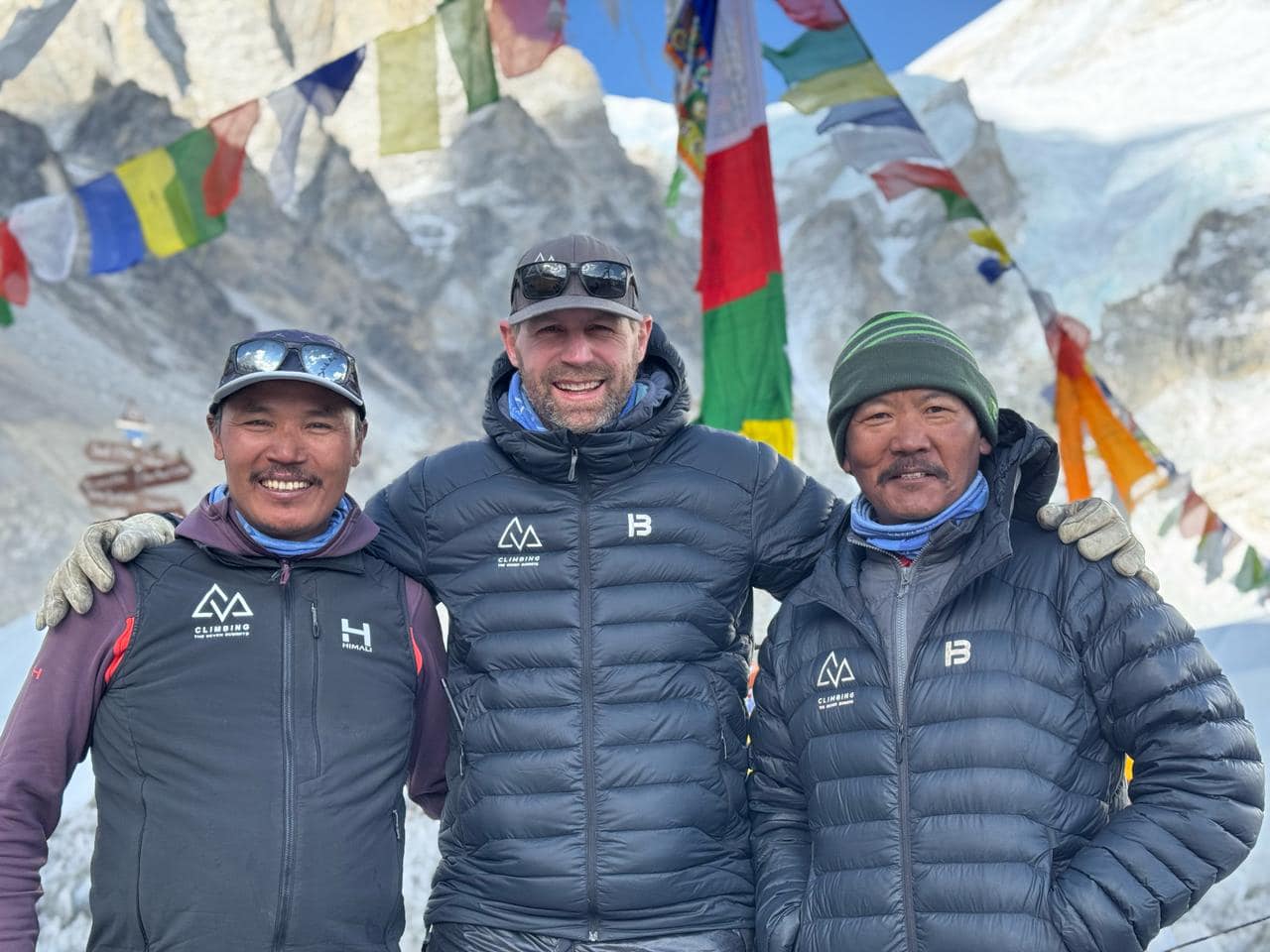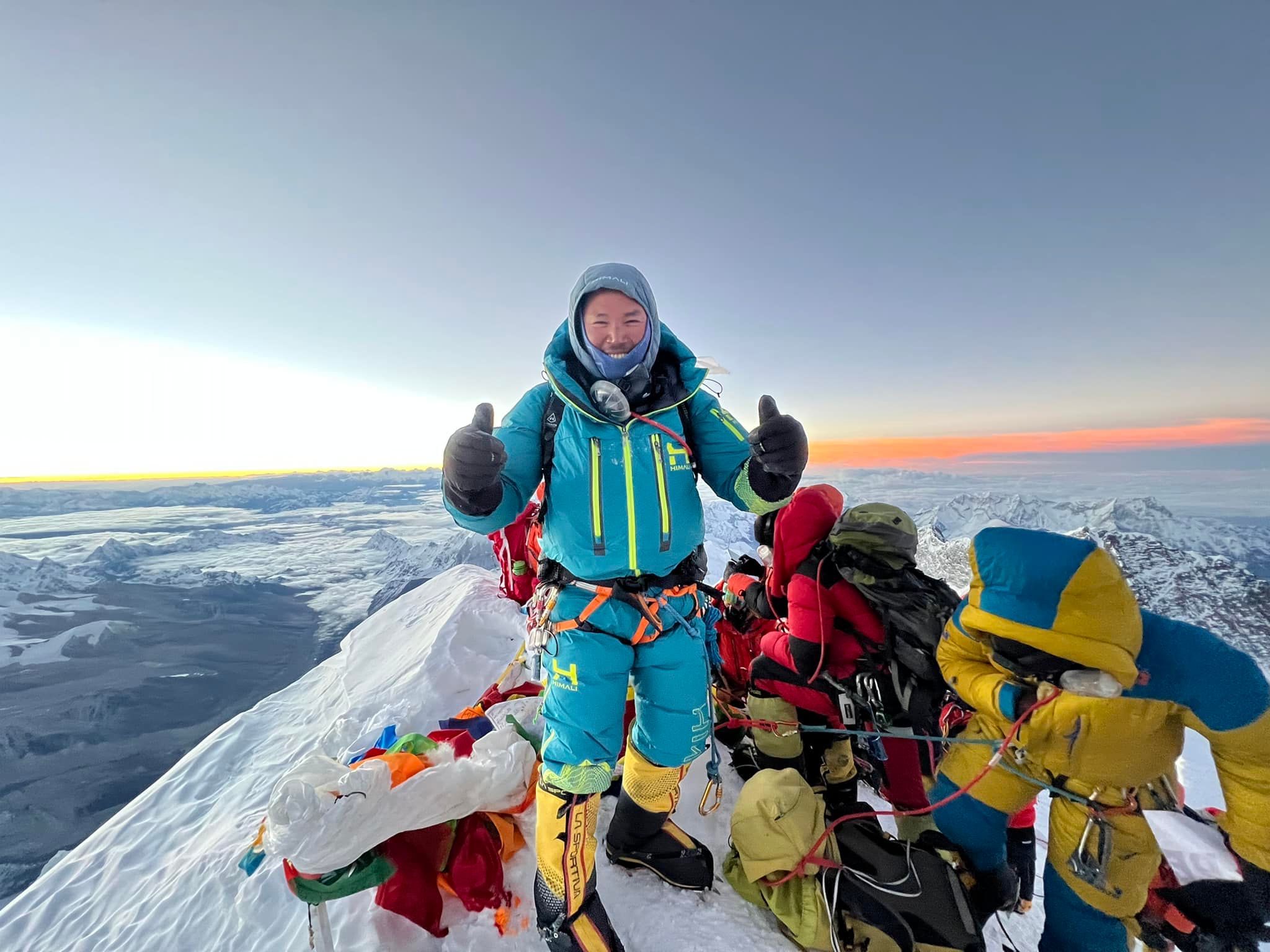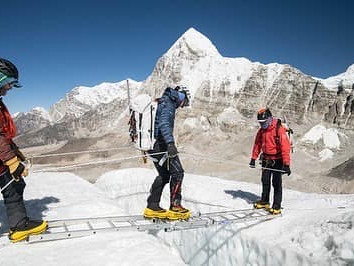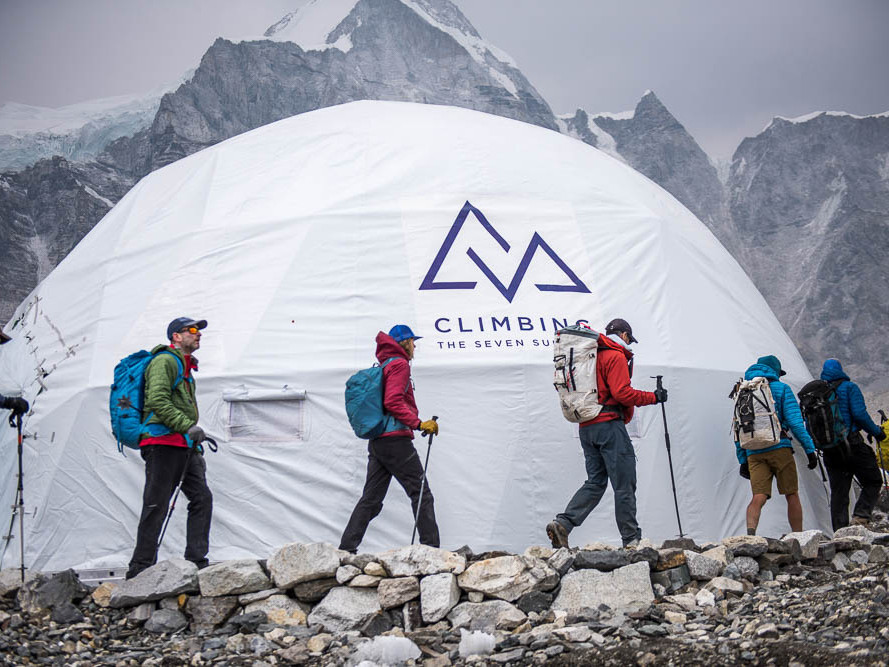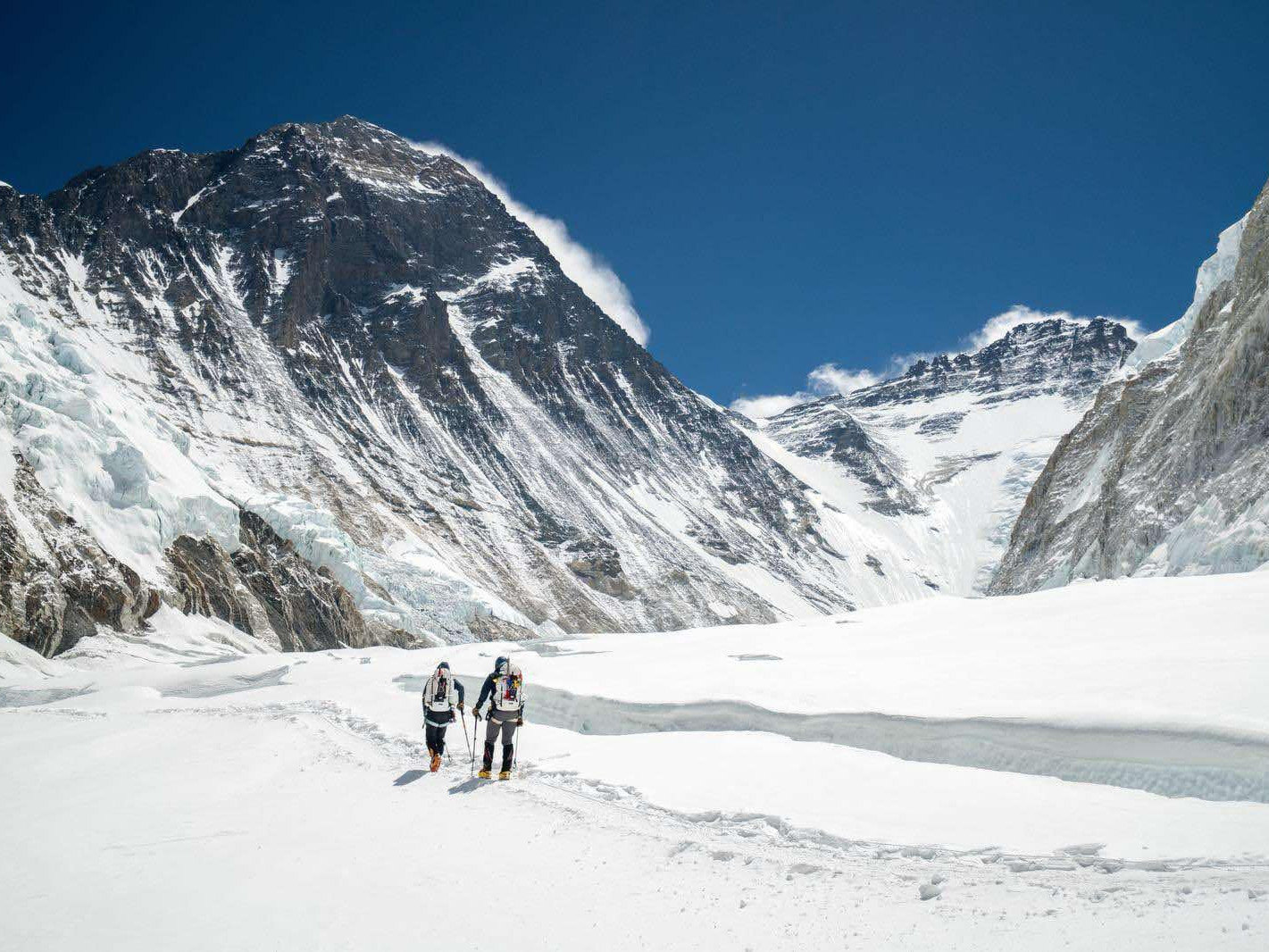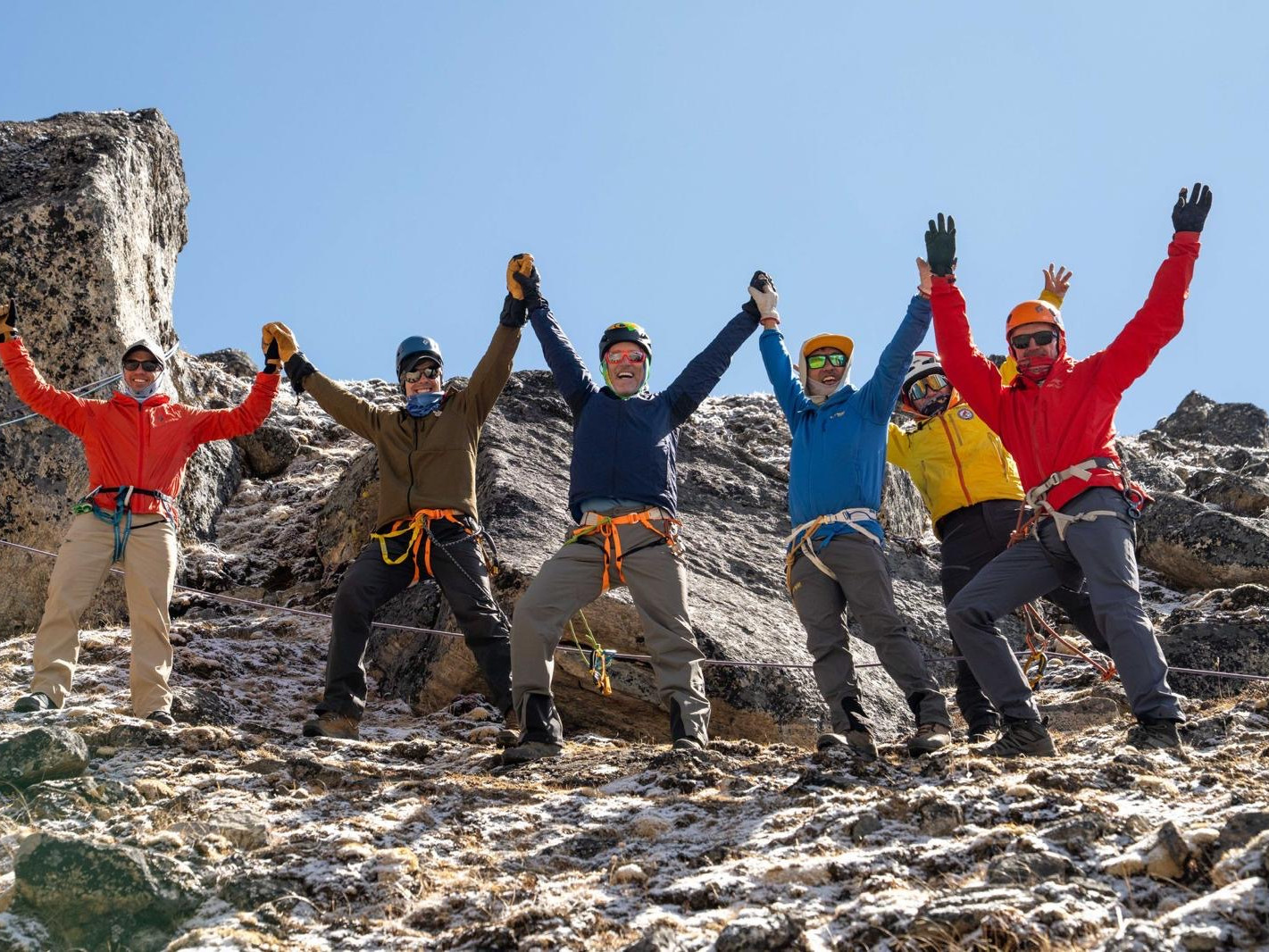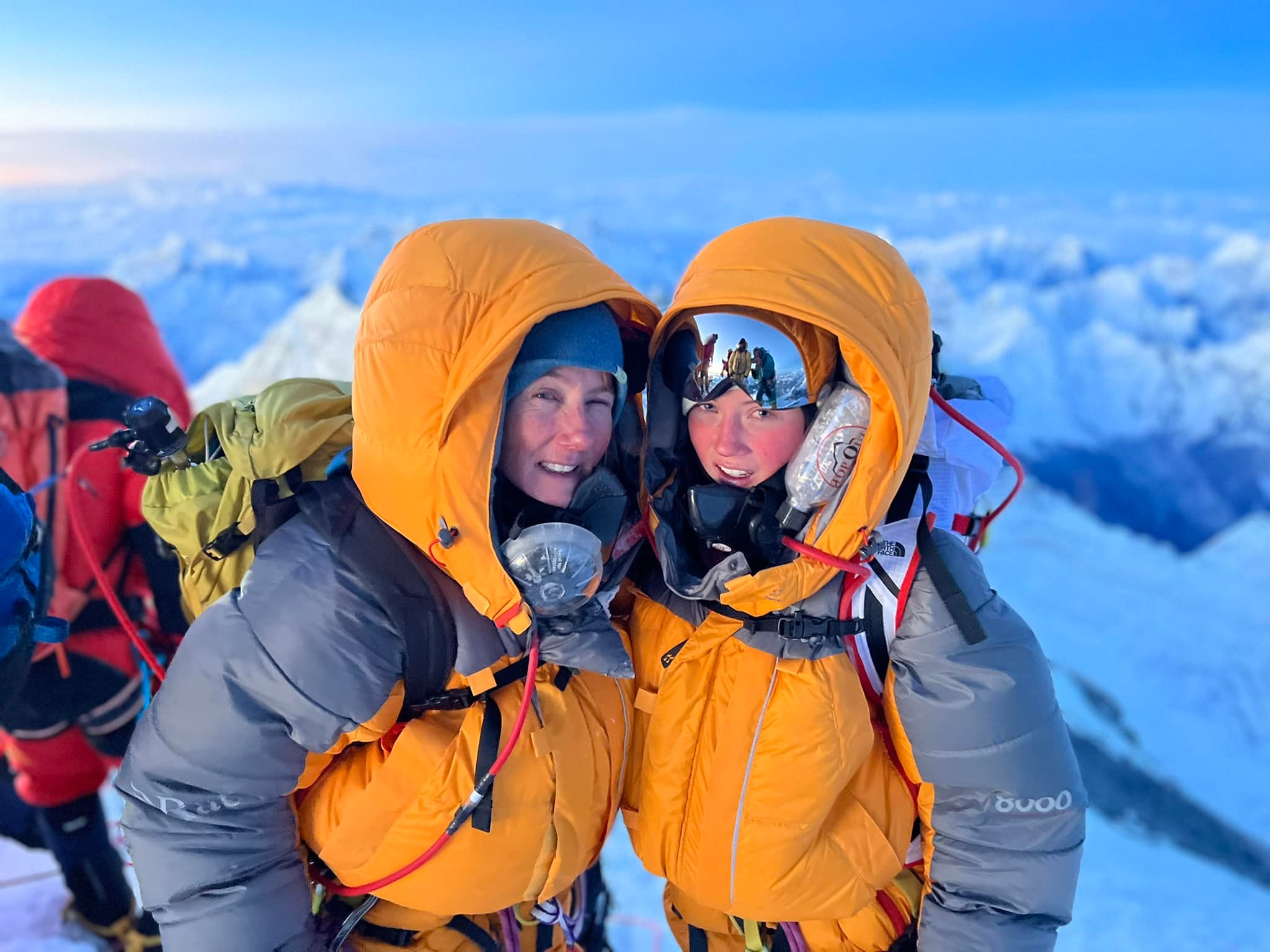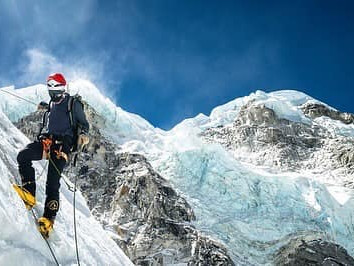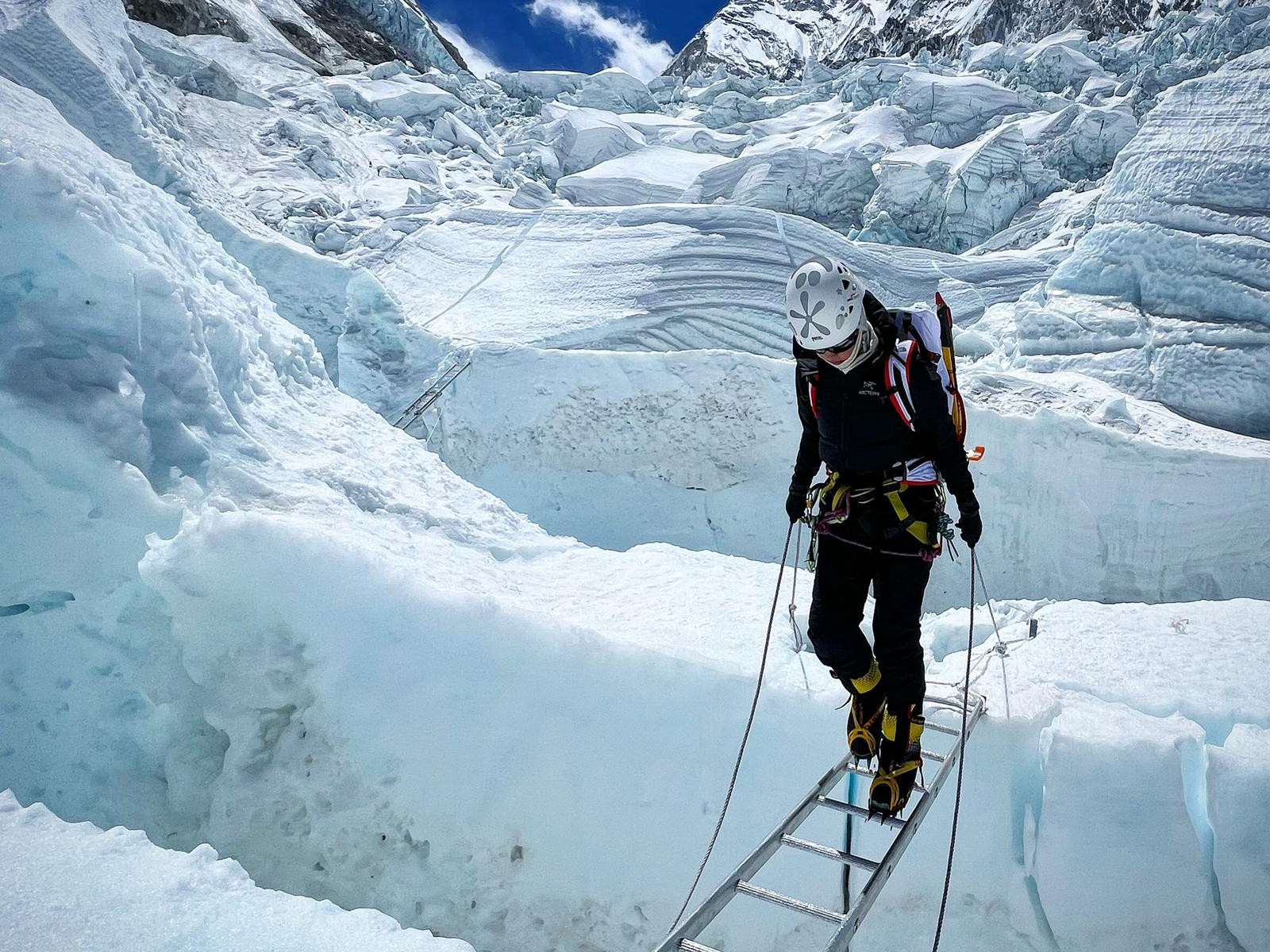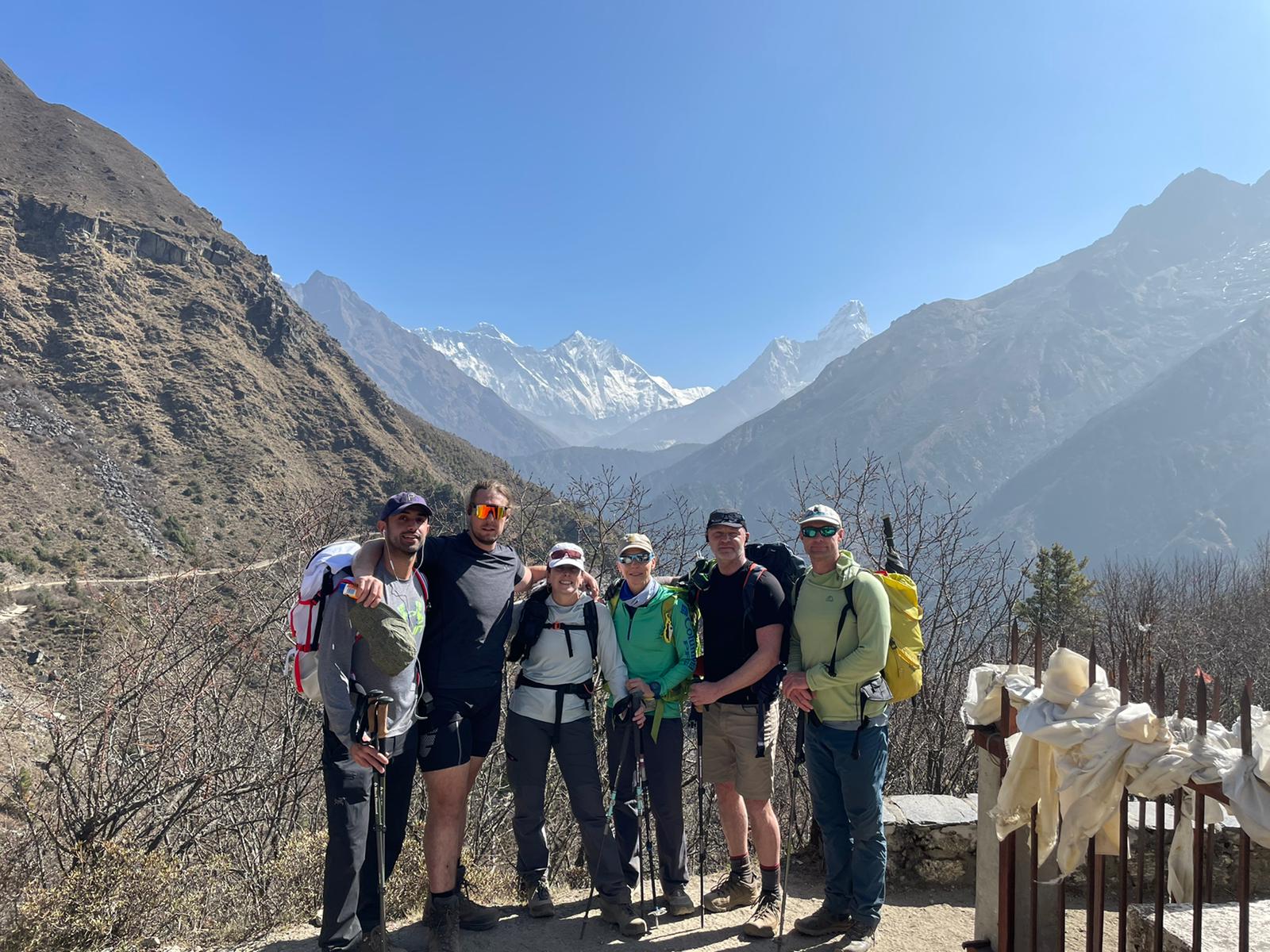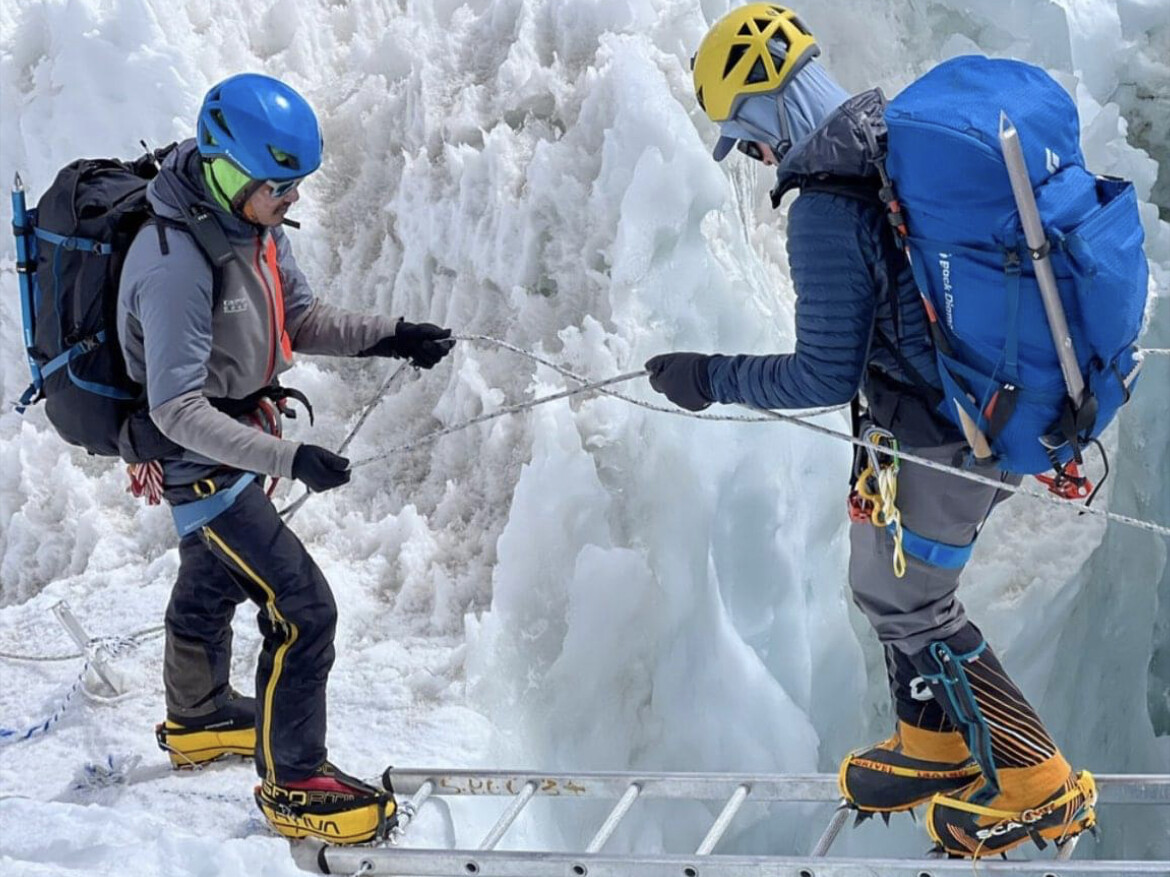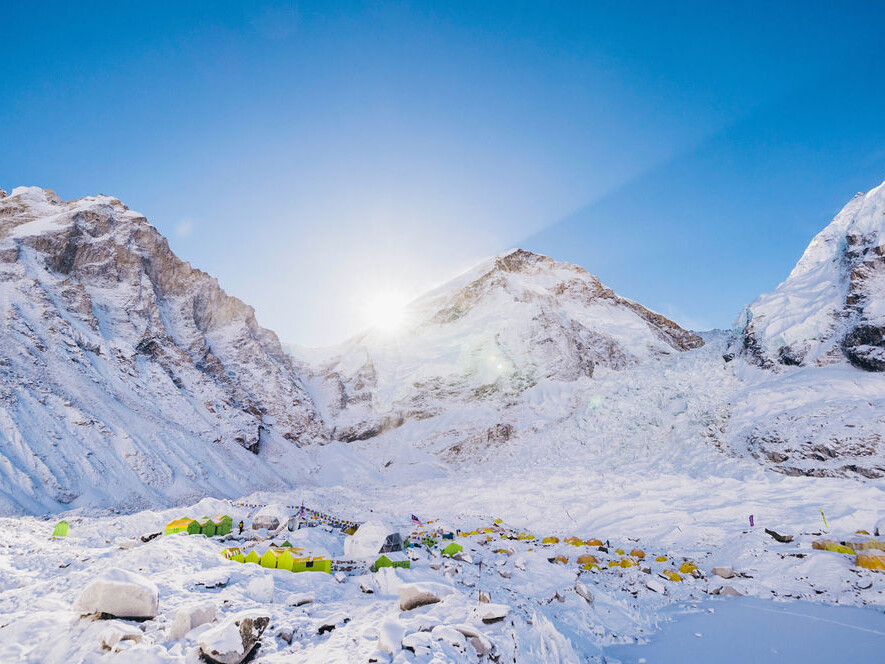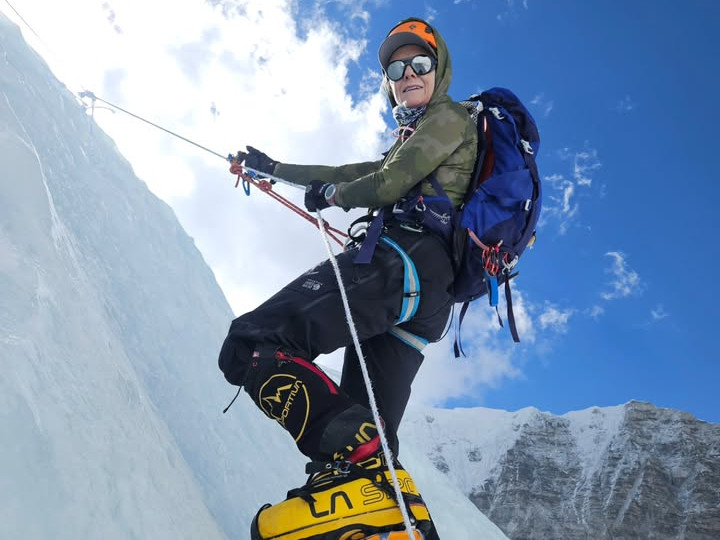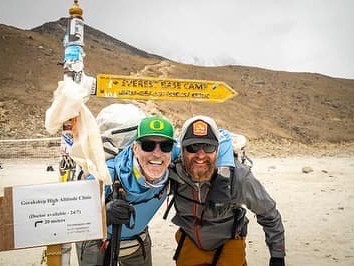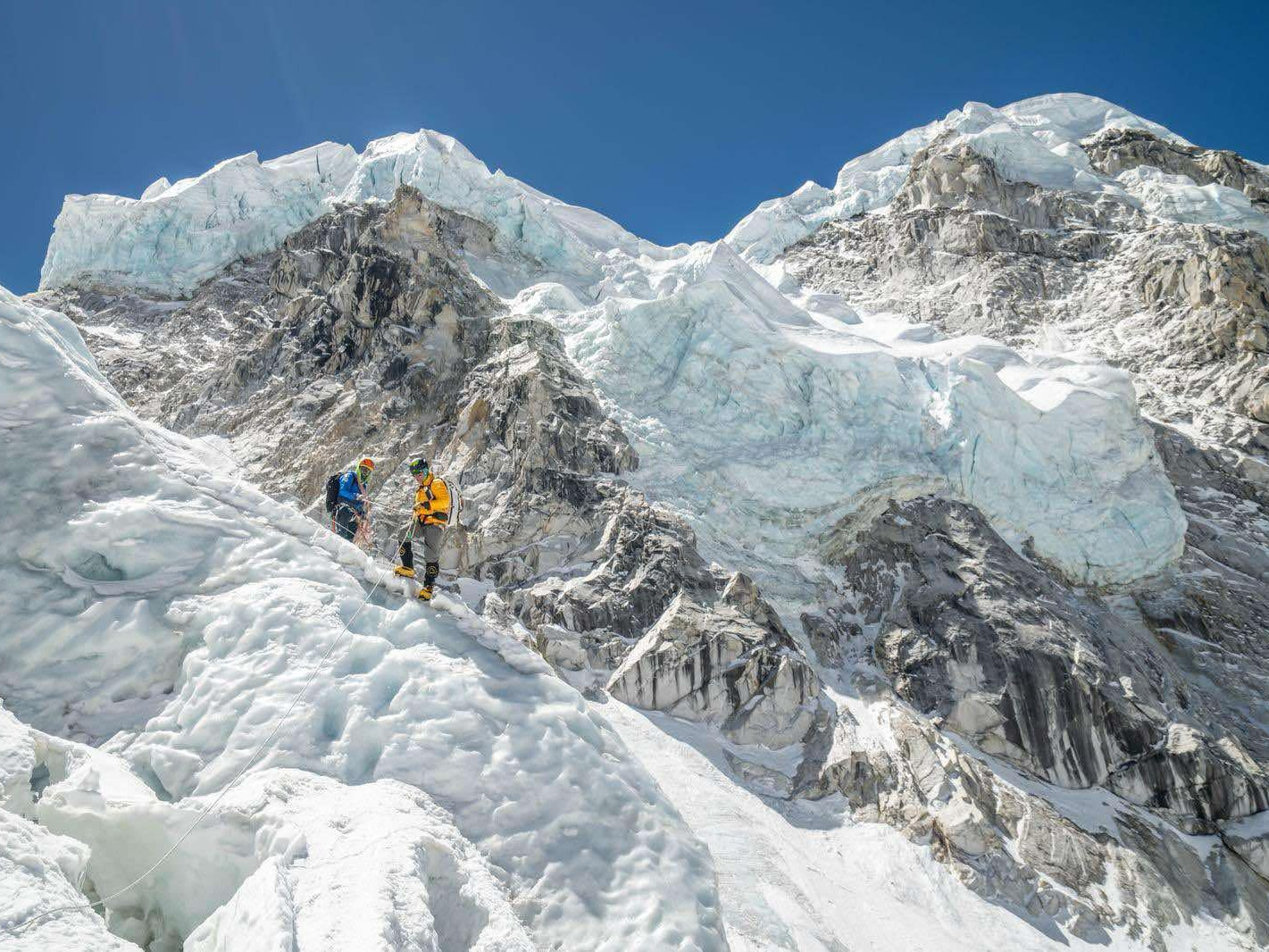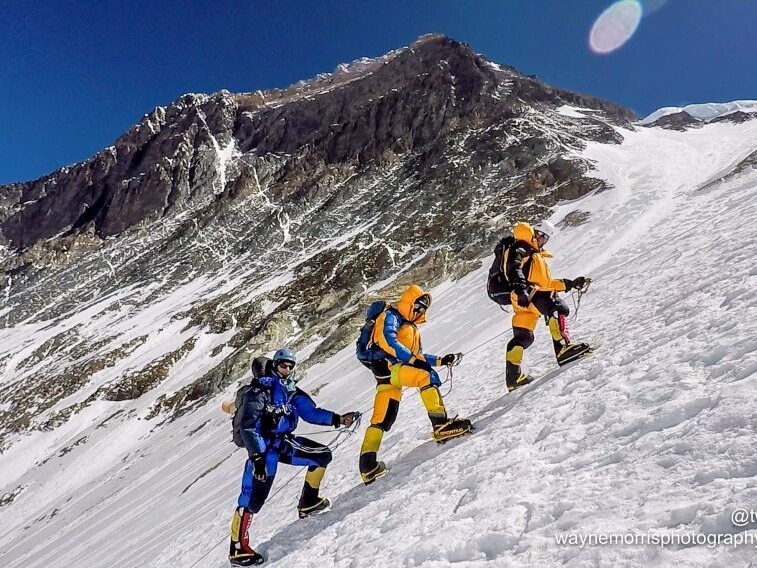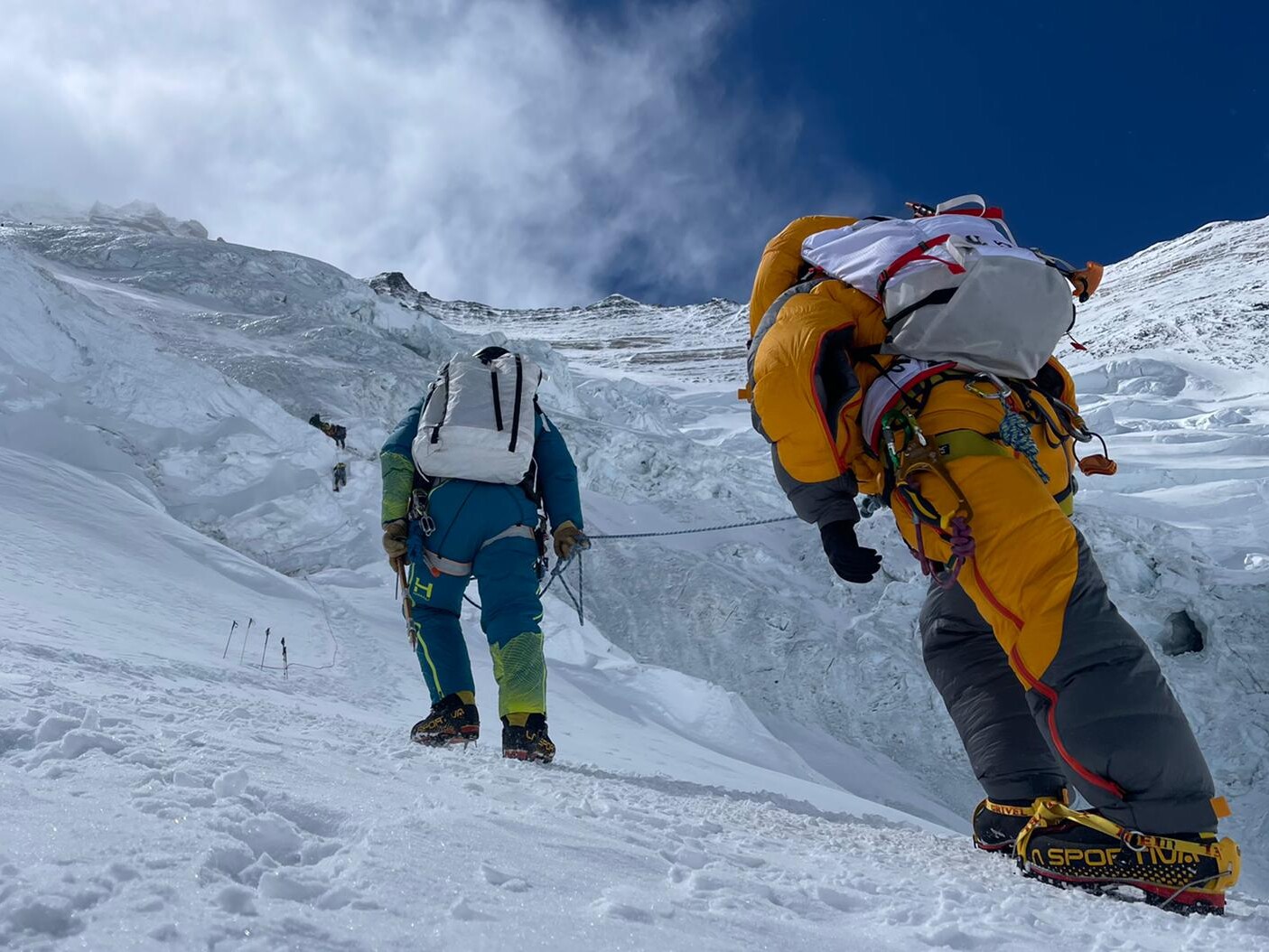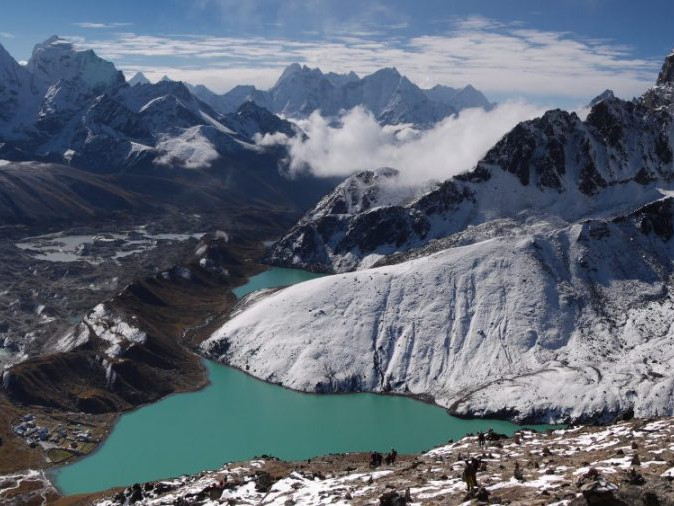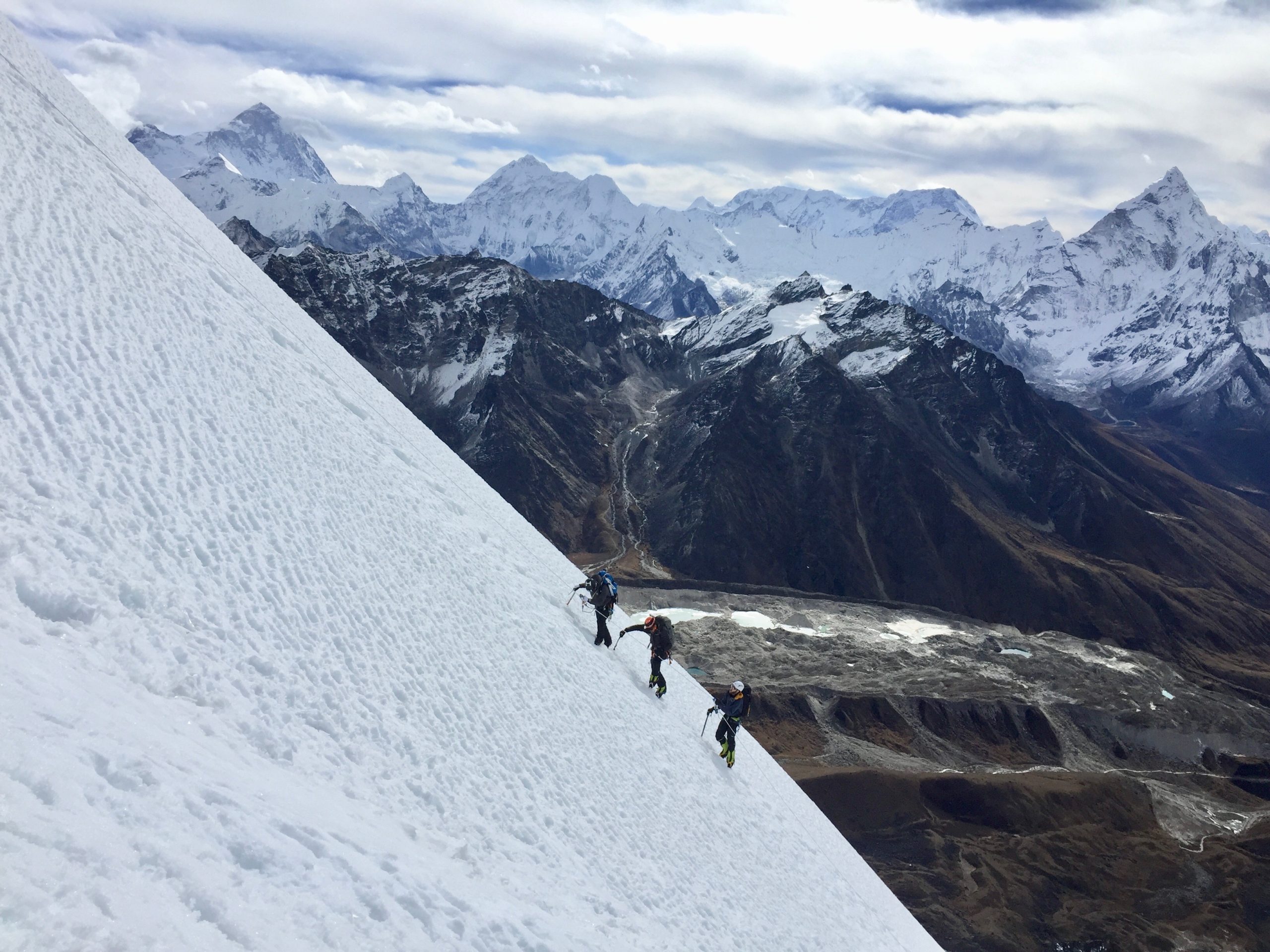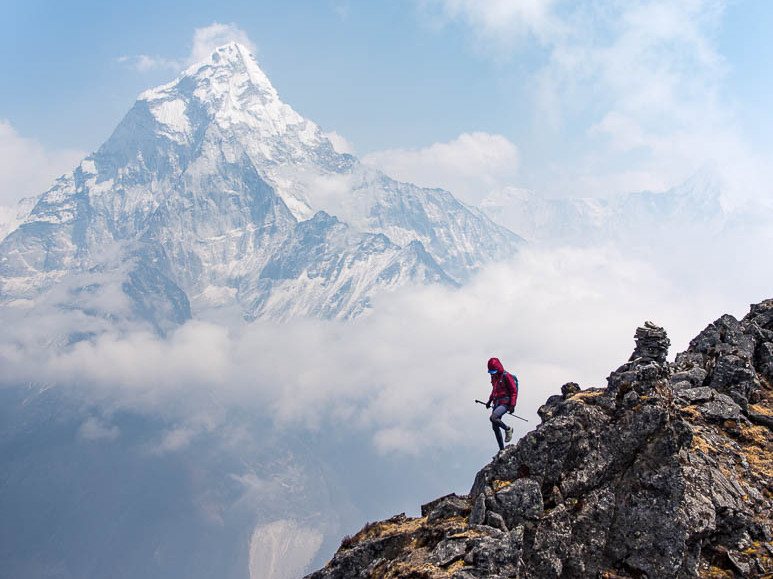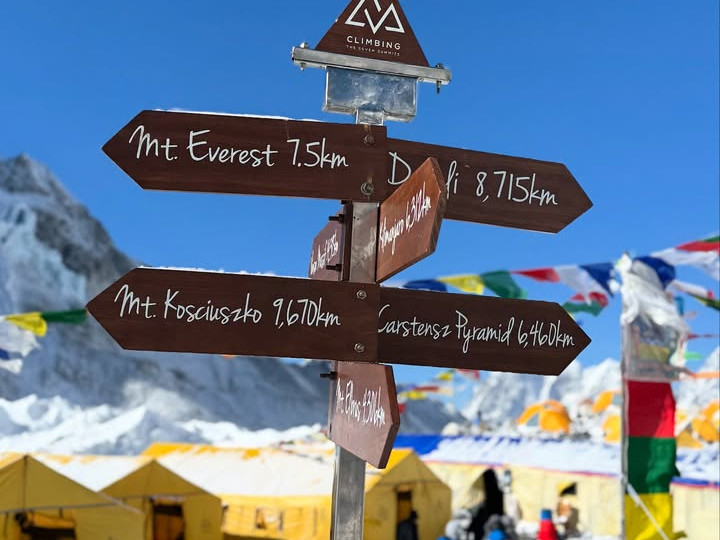2026 CTSS Everest Program & Cost Guide
When people start thinking seriously about climbing Everest, the same questions always come up: What does it really cost? What program is right for me? What do I need to be ready? From permit fees and training prerequisites to budgeting for the full expedition, it is easy to get overwhelmed by the options.
At Climbing the Seven Summits, we have built our Everest program to be clear, customizable, and unmatched in value.
We are not a one-size-fits-all operator. Every CTSS climb, whether it is a streamlined, autonomous ascent or a full-service private expedition, shares the same backbone of exceptional logistics, safety standards, and experienced leadership. Think of it like booking a flight: the plane, pilots, and destination are the same, but the way you choose to travel is up to you. We offer everything from our incredibly comfortable, all-inclusive “economy” climbs to the Everest equivalent of First Class, so you can match your program to your experience, goals, and budget.
Despite rising permit fees, ground costs, and global price pressures, our 2026 pricing stays competitive without compromising safety or expedition quality. Use this guide to compare our Everest climb options side by side, see what is included, what kind of guidance you will get, how much autonomy you will have, and what each experience feels like on the mountain.
Meet the CTSS Everest Team
Many people ask what CTSS’s “secret sauce” is on Mt Everest. The answer is simple — it starts with our leadership and our people. Our incredibly strong Sherpa team, alongside our international and Nepali guides, forms the backbone of the expedition. At the core are co-expedition Leaders Big Tendi and Little Tendi, and our founder, Mike Hamill, supported by our incredible team in Kathmandu, who keep every detail running seamlessly.
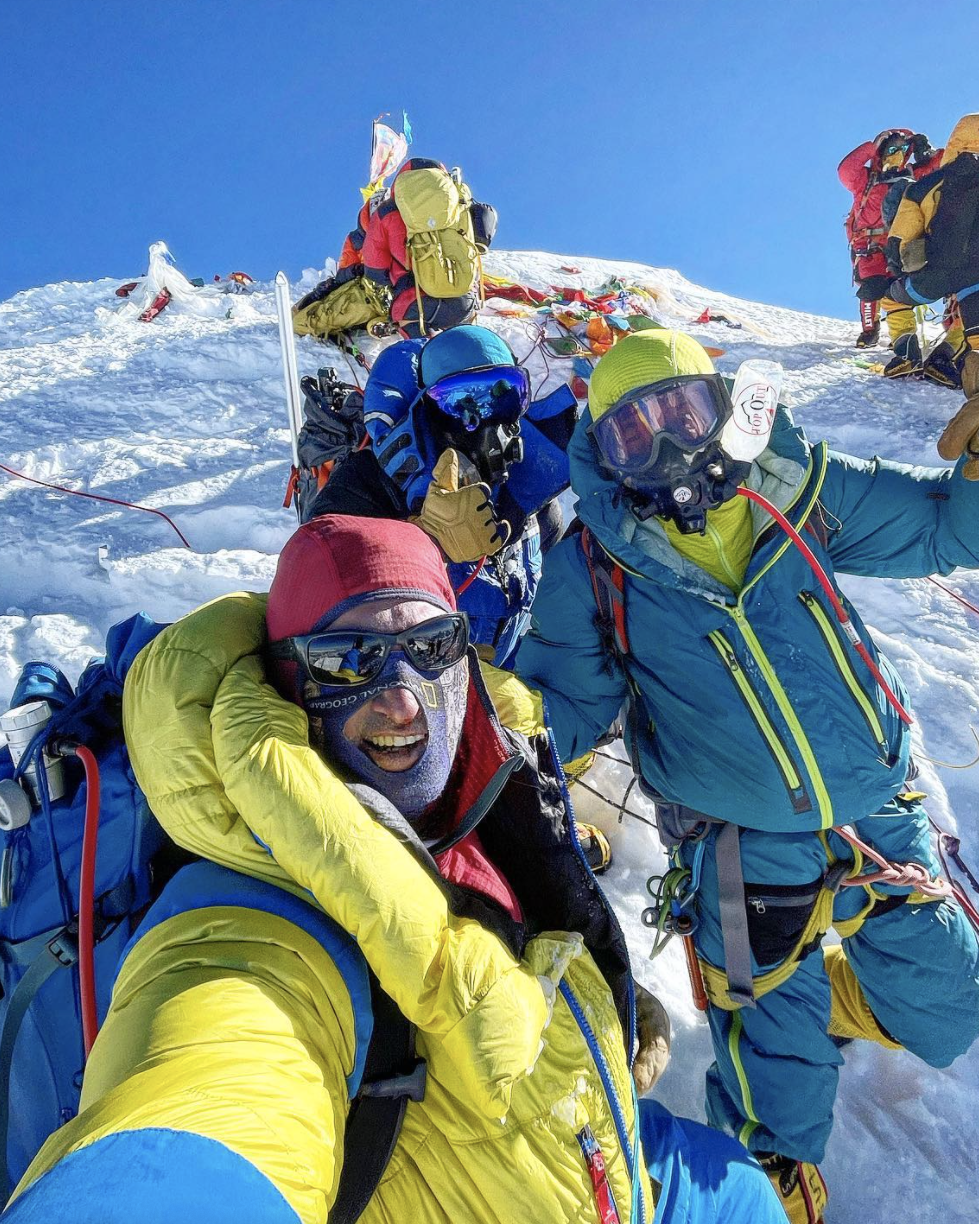
Mike Hamill: Founder and Expedition Leader
Mike is one of the world’s most accomplished high-altitude guides, with 6 Everest summits, 6 laps of the Seven Summits, and over 200 summits on 31 x 8,000m expeditions. He has guided more climbers to the top of 8,000m peaks than anyone in the industry. A veteran of 120+ major high-altitude climbs worldwide, Mike is also the author of Climbing the Seven Summits, the definitive guidebook on the subject, and the founder of the Tiger of the Snows Fund, supporting education for outdoor tourism workers and their families. His career spans guiding everywhere from the Himalayas to Antarctica, Alaska, and South America, with an unparalleled safety and success record.
Pasang Tendi Sherpa (Little Tendi): Co-Expedition Leader & Sirdar
Little Tendi is one of the most respected guides on Mt Everest, with 18 Everest summits from both the North and South sides, along with ascents of Manaslu, Cho Oyu, Lhotse, and many technical and remote peaks in Nepal. A fully internationally certified IFMGA/UIAGM guide, he is also CTSS’s Sirdar, overseeing all Himalayan expedition logistics, and guides internationally in Argentina, Bolivia, Antarctica, and beyond. Tendi is co-founder of the Himali brand, founder of the Tendi Sherpa Foundation, and an in-demand speaker at events from the Mountain Film Festival to Facebook and Apple headquarters. He is the most booked guide on the CTSS roster, with clients reserving his guidance years in advance.
Tendi Sherpa (Big Tendi): Co-Expedition Leader
Big Tendi has 4 Everest summits, and more than 30 years of experience guiding over 100 mountains worldwide, from the Alps to the Himalayas. A fully IFMGA-certified guide, he is the Technical Director for the Nepal Mountain Guides Association, having trained and mentored an entire generation of Nepali guides to international standards. In addition to his guiding role, Big Tendi is a partner in CTSS’s local logistics company in Nepal, working year-round to plan and execute our expeditions. His leadership, technical expertise, and dedication to elevating the guiding profession have made him one of the most respected figures in Himalayan mountaineering.
Between Mike, Big Tendi, and Little Tendi, CTSS has over 55 Everest expeditions and nearly 100 x 8,000m summits of combined experience. This expertise, paired with the dedication of our guiding and Sherpa teams, is the foundation for the safety, quality, and success of our Everest program.
The Sherpa Team: The Backbone of Our Expedition
Sherpas are the heart of any Himalayan expedition. From carrying loads and fixing ropes to managing oxygen and building high camps in the harshest conditions, they make every summit possible. Collectively, they bring dozens of Everest summits and hundreds of Himalayan ascents to the table. Beyond their technical skill, they are defined by their humility and an unwavering commitment to their teammates’ safety and success.
Our team, hand-selected and led by Little Tendi, represents the very best in the Himalaya. Many have guided internationally alongside CTSS on peaks such as Lhotse, Manaslu, and Cho Oyu. Their hard work and expertise underpin every safe and successful climb we lead in the Himalaya—and for many climbers, the bonds formed with our Sherpa team become some of the most lasting memories of the expedition.
CTSS 2026 Everest Climb Options
Sherpa Supported Climb (Logistics-Only)
For highly experienced, self-sufficient climbers seeking independence with CTSS logistical support. Sherpa joins only above Camp 2 for summit bid.
- Price: Starting at $54,995 USD
- Departs Annually: April 3 – May 31 (58 Days)
- Affordability: High
- Guide Support: Low
- Autonomy: High
- Experience: Requires extensive high-altitude climbing experience, ideally with prior 8,000m expeditions. Must be fully self-sufficient, as this option only provides logistical support.
Pros: Maximum personal control over pace, route decisions, and climbing style; streamlined logistics without group obligations; access to CTSS amenities while staying independent.
Cons: Summit support late in the climb; requires deep prior experience that will be vetted, including personal experience with Everest terrain.
Personal Sherpa Climb
One-to-one Sherpa companion climber from Base Camp to summit and on all rotations. Includes CTSS logistics and expedition leader oversight.
- Price: Starting at $58,995 USD
- Departs Annually: April 3 – May 31 (58 Days)
- Affordability: High
- Guide Support: Low
- Autonomy: High
- Experience: Suitable for highly competent, self-sufficient climbers familiar with using high-altitude oxygen systems; prior 7,000m or 8,000m experience strongly recommended.
Pros: Dedicated climbing partner for the full expedition; maintains independence and autonomy.
Cons: Requires deep prior experience that will be vetted. Not intended for climbers who want a guided program; early rotations may involve adjusting to different climbing partners.
IFMGA Sherpa Team Climb
Small team (maximum five climbers per IFMGA-certified Sherpa Guide) for experienced climbers seeking skilled Nepali guidance, camaraderie, and lower costs. Includes personal Sherpa on summit day.
- Price: Starting at $59,995 USD
- Departs Annually: April 3 – May 31 (58 Days)
- Affordability: Medium
- Guide Support: Low
- Autonomy: Medium
- Experience: For experienced climbers with solid technical skills and experience above 7,000m (Aconcagua acceptable) or preferably prior 8,000m climbs
Pros: Learn from a Nepali guide with extensive Everest expertise; team-based problem-solving and morale boosts; balanced cost for guided service
Cons: Higher guide: climber ratio. Less one-on-one instruction; team pace may differ from personal preference
Private 1:1 Sherpa Guided Climb
Private climb with a Nepali Guide for ultimate oversight and flexibility. Excellent value for personalized guidance. Includes personal oxygen carrying companion Sherpa on summit bid.
- Price: Starting at $69,995 USD
- Departs Annually: April 3 – May 31 (58 Days)
- Affordability: Medium
- Guide Support: High
- Autonomy: High
- Experience: Requires proven climbing skills and a solid mountaineering background; good for those wanting private 1:1 guidance but still bringing their own competence.
Pros: Full-time expert focused solely on your climb; highly flexible schedule; custom pacing. Benefit from your guide’s deep Himalayan knowledge
Cons: Potential cultural and language barriers. Less natural group camaraderie
Western Guided Team Climb
Led by a world-class Western or international guide starting in Kathmandu, through the entire expedition. Strong camaraderie and high summit success rates. Includes personal oxygen carrying companion Sherpa on summit bid.
- Price: Starting at $74,995 USD
- Departs Annually: March 30th – May 27th (58 days)
- Affordability: Medium
- Guide Support: High
- Autonomy: Medium
- Experience: For competent, team-oriented climbers comfortable on technical alpine terrain; prior high-altitude experience recommended, but can be less than 8,000m.
Pros: Comprehensive mentorship from an internationally recognized guide; strong social bonds within the group; proven summit results season after season.
Cons: Must adapt to group pace and strategy; less individualized 1:1 coaching than a private climb.
Private Western Guided Climb
The ultimate Everest experience with a private Western/International guide and personal Sherpa for summit day. Highest service level and summit success probability.
- Price: Starting at $129,995 USD
- Departs Annually: April 1st – May 29th (58 Days)
- Affordability: Low
- Guide Support: High
- Autonomy: Very High
- Experience: Suitable for a wide range of climbers but prior high-altitude experience recommended but can be less than 8,000m.
Pros: Tailored plan from an elite guide; maximum safety through constant attention; flexible decision-making without compromise
Cons: Premium cost; less team camaraderie.
Everest The Formula
Holistic custom program with unparalleled resources, staff, and service for those seeking the absolute best in preparation, safety, comfort, and performance.
- Price: By Request
- Departs Annually: April 1st – May 29th (58 Days)
- Affordability: Low
- Guide Support: Very High
- Autonomy: High
- Experience: Tailored to the individual; for those who are ready to commit to an intensive preparation program.
Pros: Exclusive, bespoke program; unmatched preparation and guidance, extensive support both on and off the mountain
Cons: Significant financial investment; highly curated experience may feel less rugged for those who prefer a traditional expedition style
Speed Ascents
Pre-acclimatization at home before departure is required. Designed for climbers with limited time who want to shorten the expedition while maintaining safety and summit success.
30-Day Speed Ascent: Aggressive 8-week home program, skips Lobuche
- Price: Add-on $12,000 USD to your selected Everest Program
- Departs Annually: April 20th – 19th May (30 Days)
- Experience: Requires a strict 8-week pre-acclimatization using a hypoxic chamber.
40-Day Speed Ascent: Includes Lobuche climb, 6-week home program
- Price: Add-on $10,000 USD to your selected Everest Program
- Departs Annually: April 12th – May 21st (40 Days)
- Experience: For experienced climbers able to complete a 6-week home pre-acclimatization program; includes more natural acclimatization than the 30-day option. Includes a Lobuche rotation
CTSS 2026 Partial Climbs, Add-On Climbs, and Treks
Camp 2 Everest Climb
Get a taste of Everest up to 21,500 ft. Ideal for future summit prep or the full Everest experience without the pressure or financial commitment. Great to see how you will go in the future.
- Price: Starting at $17,995 USD
- Departs Annually: April 3rd – May 3rd (30 Days)
- Experience: More entry-level. Prior high-altitude climbing recommended.
Pros: Experience the Khumbu Icefall and Western CWM; gain familiarity with Everest logistics; climb on oxygen, shorter duration, more affordable entry point to high altitude. Get a home-ground advantage
Cons: Does not allow for a summit bid at the time, does not include the option to climb on oxygen
Camp 3 Everest Climb
Climb to 24,000 ft and satisfy the 7,000m prerequisite with the option to use oxygen for skills training.
- Price: Starting at $21,995 USD
- Departs Annually: April 3rd – May 12th (39 Days)
- Experience: For experienced climbers with prior high-altitude expeditions; comfort with fixed lines, crampons, and ice axe required.
Pros: Learn high-altitude oxygen use; climb the Lhotse Face; excellent preparation for an 8,000m summit bid without the price tag. Home ground advantage
Cons: Does not allow for a summit bid at the time,
Lhotse Climb
The fourth-highest mountain in the world, sharing much of Everest’s route for a spectacular, challenging ascent.
- Price: starting at $34,995 USD
- Annually: April 3rd – May 24th (52 Days)
- Experience: Requires a strong climbing resume, physically and technically demanding.
Pros: Much more affordable than Everest, but climbs most of the route. 4th-highest peak in the world. Benefits from the logistics of the Everest expedition
Cons: Shares the route with Everest, which can be crowded at times.
Lobuche East Climb
Iconic Himalayan training peak with some of the best views in the region.
- Price: starting at $6,995 USD
- Annually: April 3rd – April 25th (22 Days)
- Experience: For climbers familiar with basic alpine skills, it is a good first Himalayan peak.
Pros: Great for first-time Himalayan climbers; excellent skills refresher; stunning summit panorama. Includes a visit to Everest Base Camp. Opportunity to climb alongside Everest guides.
Cons: In a dry year, the route can be less accessible.
3 Peaks Climb & Trek
Lobuche, Pokalde, and Island Peak in one expedition for maximum variety and skill building.
- Price: starting at $9,995 USD
- Annually: April 3rd – April 30th (28 Days)
- Experience: For climbers with basic alpine skills; great as a first Himalayan expedition and as progression training for higher mountains.
Pros: Diverse climbing challenges; multiple opportunities across multiple peaks. Takes advantage of 3 climbs in a single expedition to maximise time away from home, expense, training, and acclimatization.
Cons: Packed schedule with limited rest days
Gokyo Return Extension
Add variety to your return trek from Everest Base Camp with a two-day extension that crosses the Cho La Pass (5,420m) into the Gokyo Valley, home to turquoise lakes, massive glaciers, and quieter trails.
- Price: starting at $1,495 USD
- Departs Annually: Adds 2 days to your return itinerary
- Experience: For fit, experienced trekkers looking to get off the beaten path and take on an additional challenge.
Pros: Stunning views of Everest, Lhotse, and Makalu; turquoise Gokyo Lakes; quieter trails and a unique cultural experience; avoids retracing the same route.
Cons: Long trekking days; requires strong fitness.
Everest Base Camp Trek
The world’s most famous trek with rare access to Base Camp proper and an optional ice clinic.
- Price: Starting at $5,495 USD
- Departs Annually: April 3rd – April 22rd (20 Days)
- Experience: For fit trekkers; no technical climbing experience required.
Pros: Iconic trekking route; insider access to the mountaineers’ Base Camp. Benefits from the Everest logistics.
Rugged Luxury Everest Base Camp Trek & Stay
The most luxurious Everest Base Camp experience in the world with luxury lodges, geodesic domes, a helicopter return, and champagne on the glacier.
- Price: starting at $19,995 USD
- Departs Annually: 28th March – 14th April (18 days)
- Experience: For fit trekkers; no technical climbing experience required.
Pros: Exceptional comfort in a remote setting; guided by an Everest summit guide; exclusive access to Base Camp proper
Everest Permits, Fees & Costs to Plan For
Our Everest expeditions are designed to be as inclusive as possible. Beyond your personal travel, gear, and insurance, almost everything you need on the mountain is covered. Here’s exactly what’s included—and what’s not—so you can plan confidently.
Included Permits & Government Fees
- Nepal Government Climbing Permits for relevant program(s)
- Trekking permits for the Khumbu Valley
Costs Not Included
- International flights to/from Kathmandu
- Entry visa for Nepal (payable on arrival)
- Personal travel and rescue insurance (required for all participants)
- Meals in Kathmandu outside of those provided by CTSS
- Personal gear and clothing
- Optional gear rentals from CTSS
- Tips/gratuities for Sherpa and guide teams
- Extra oxygen beyond your included allocation
- Personal communications (satellite phone, Wi-Fi in camp, etc.)
- Evacuation or medical treatment beyond what’s included in program logistics
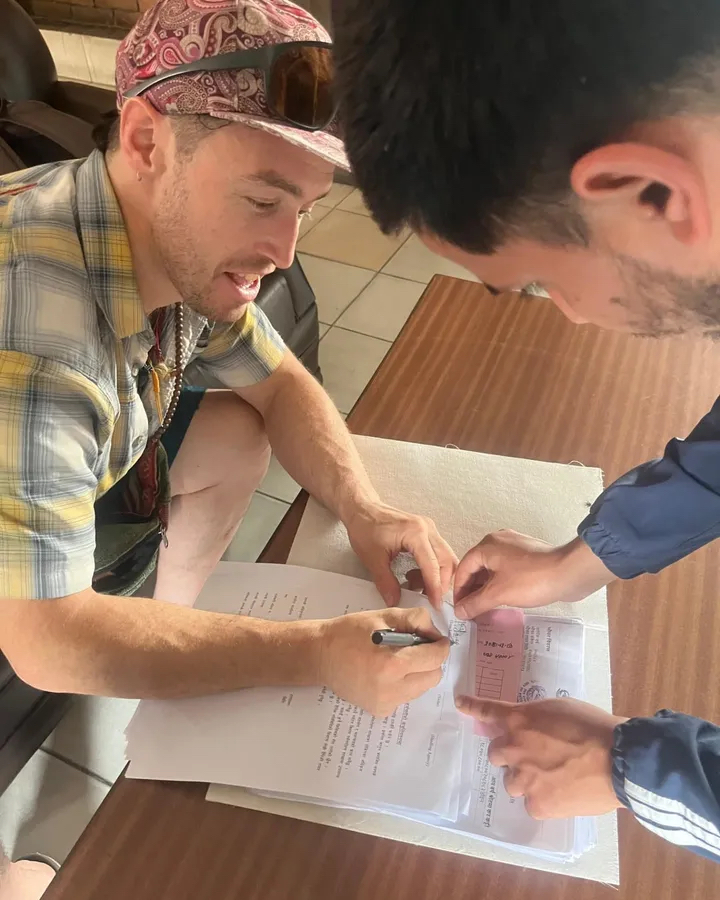
Ready to Take the Next Step? Join Us at the Summit Side Chat: Inside the CTSS Everest Experience
From the first steps through the Khumbu Valley to the final push along Everest’s summit ridge, no two climbs are alike, and at Climbing the Seven Summits, we believe they shouldn’t be.
Join CTSS Co-Founders Mike Hamill and Caroline Pemberton, together with CTSS Sirdar and IFMGA Mountain Guide Tendi Sherpa, for an insider look at what it really takes to stand on top of the world, and why CTSS has become the most consistently successful team on Everest.
With 24 Everest summits, 100+ high-altitude expeditions, and decades of guiding experience between them, our leadership team will pull back the curtain on the strategy, systems, and subtle details that define CTSS’s approach: from acclimatization and weather windows to our signature Marginal Gains Philosophy that keeps our climbers safe, strong, and summit-ready.
We’ll also touch on the broader Himalayan journey, from technical giants like Ama Dablam, Cho Oyu, and Manaslu to preparatory climbs like Lobuche East that build confidence for Everest success. You’ll discover how our Everest Base Camp Treks provide unparalleled access to expedition life, and how every CTSS program is custom-engineered to your goals, pace, and experience.
Whether you’re preparing for your Everest summit bid or taking your first Himalayan step, this is your chance to learn directly from the team behind Everest’s best-performing expeditions—and gain the clarity, confidence, and insider insight to make your own climb a success.
